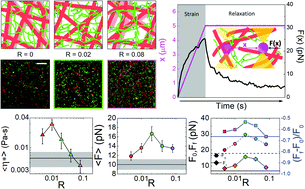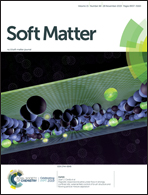Non-monotonic dependence of stiffness on actin crosslinking in cytoskeleton composites
Abstract
The cytoskeleton is able to precisely tune its structure and mechanics through interactions between semiflexible actin filaments, rigid microtubules and a suite of crosslinker proteins. However, the role that each of these components, as well as the interactions between them, plays in the dynamics of the composite cytoskeleton remains an open question. Here, we use optical tweezers microrheology and fluorescence confocal microscopy to reveal the surprising ways in which actin crosslinking tunes the viscoelasticity and mobility of actin–microtubule composites from steady-state to the highly nonlinear regime. While previous studies have shown that increasing crosslinking in actin networks increases elasticity and stiffness, we instead find that composite stiffness displays a striking non-monotonic dependence on actin crosslinking – first increasing then decreasing to a response similar to or even lower than un-linked composites. We further show that actin crosslinking has an unexpectedly strong impact on the mobility of microtubules; and it is in fact the microtubule mobility – dictated by crosslinker-driven rearrangements of actin filaments – that controls composite stiffness. This result is at odds with conventional thought that actin mobility drives cytoskeleton mechanics. More generally, our results demonstrate that – when crosslinking composite materials to confer strength and resilience – more is not always better.



 Please wait while we load your content...
Please wait while we load your content...